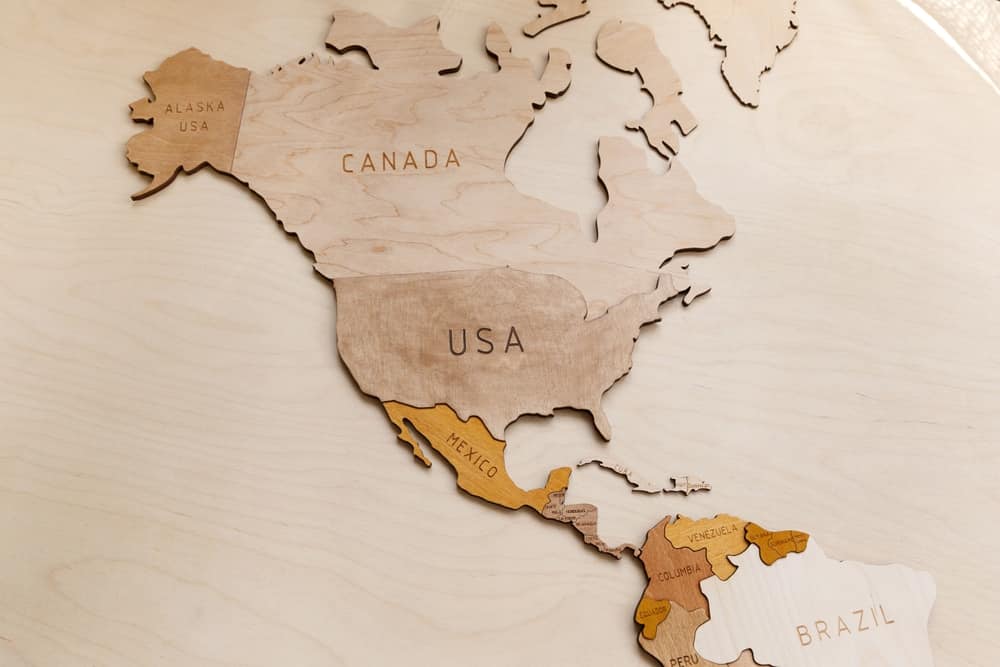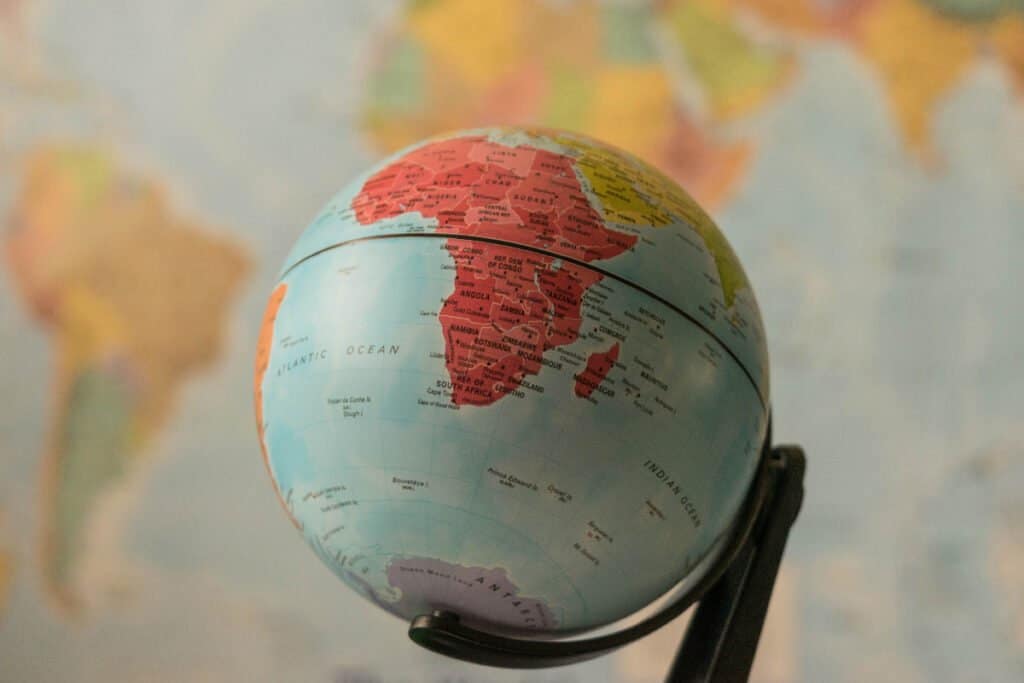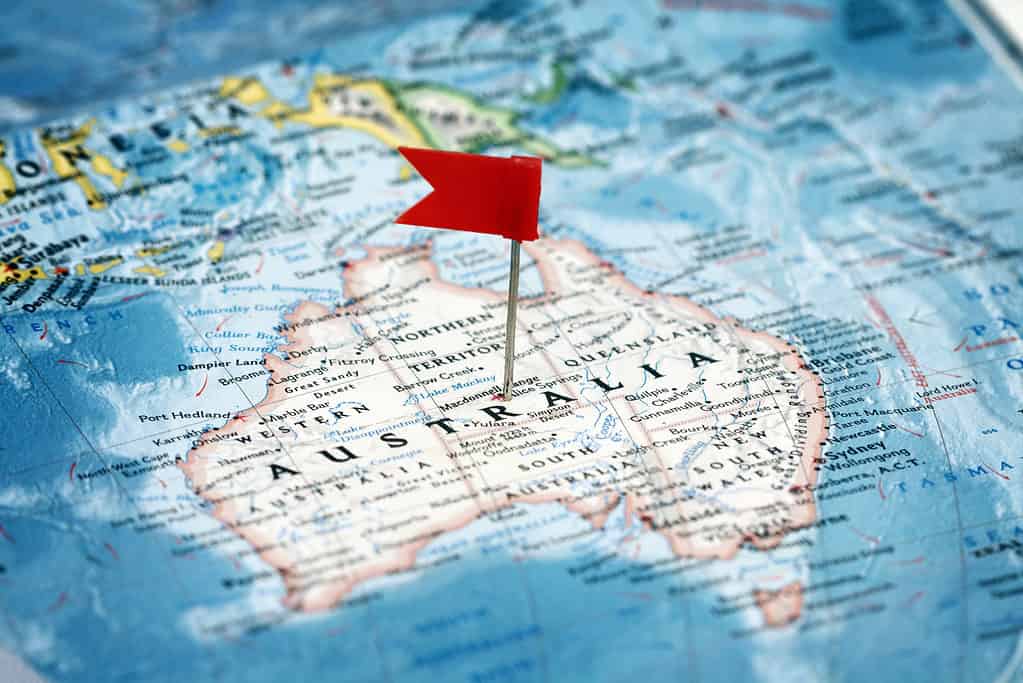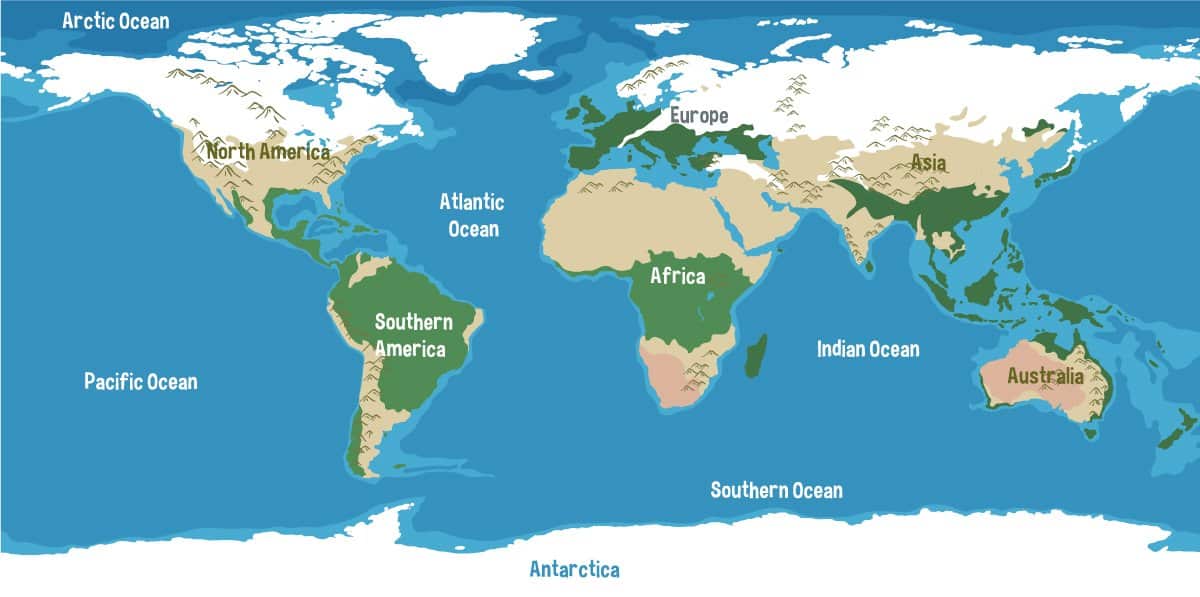The world’s population grows by around 1.1 percent each year. That’s roughly an additional 83 million people annually. And recently, the world hit a new milestone of the most living people on the planet. Discover how many people are in the world, including a breakdown of each continent’s population and when we hit different milestones.

As of November 2022, there are 8.05 billion people on the earth, a huge milestone for human development.
©GizemG/Shutterstock.com
There are 8.05 billion people in the world in 2023. The global population is determined by the number of people being born and the number of people dying. 120 years ago, there were only two billion people on the planet. The human population has grown rapidly over the past century, primarily due to an increasing life expectancy and a decrease in child mortality. However, this rapid growth is most likely temporary. We are already seeing growth slow in many countries due to falling fertility rates.
How Many People Are in North America?
There are an estimated 607 million people in North America, making up 7.5% of the world’s population. North America increases by approximately 16,000 people a day through live births and immigrants. The continent is expected to reach 612,000 people by the beginning of 2024.
How Many People Are in the United States?
The U.S. Census Bureau estimates the US population at 334 million on January 1, 2023. The United States has a slowing population growth. From 2020 to 2021, the US had a historical low, only growing by 0.12%. Births, deaths, and immigration levels were all affected by the COVID-19 pandemic. The population grew by 0.38% from 2021 to 2022, a slight increase from the previous year but still very tepid. The United States is the third-largest country in the world by population.

There are 607 million people in North America and 440 million in South America. Births are outpacing deaths on both continents.
©Olena Ilchenko/Shutterstock.com
How Many People Are in South America?
In 2021, South America’s population was at 434 million. It is now estimated at 440 million in 2023. Researchers believe South America’s population will grow steadily until 2060 when it will start leveling off. 2058 is when they will most likely reach the maximum population, around 767 million. Births are outpacing deaths, but the continent is losing people due to external migration.
How Many People Are in Europe?
As of 2023, Europe has an estimated population of 748 million. The continent has never had a population growth exceed one percent annually. In fact, they had declining population rates in the late 1990s and again between 2020 and 2021 due to the COVID pandemic. Their population is expected to peak in 2026 at 449 million. Like many places in the world, Europe’s population growth is slowing due to low birth rates.

Africa
has a total population of 1.4 billion people. They are growing by 2.5% each year, more than three times the global average.
©wael alreweie/Shutterstock.com
How Many People Are in Africa?
Africa’s total population is estimated at 1.4 billion as of 2023. And its population will be around 1.5 billion by 2050. Nigeria, Ethiopia, DR Congo, Egypt, and South Africa are the most populous countries on the continent, each having over 50 million people within its borders. Africa’s population grows by about 2.5% per year, more than three times the global average. Unlike the rest of the world, Africa has a high fertility rate.
How Many People Are in Asia?
The current population of Asia in 2023 is 4.7 billion. Asia accounts for nearly 60% of the world’s total population. China has 1.45 billion people and is the largest country in the world by population. India is the second largest with 1.41 billion. Asia had a growth rate of 0.55% in 2021 and is expected to peak by 2055 with 5.3 billion people.

Australia has 26 million people and grows one percent each year. Asia has 4.7 billion people, nearly 60% of the world’s total population.
©iStock.com/AlexKosev
How Many People Are in Australia?
Australia has a population of 26 million as of 2023. The continent’s population grew by about one percent in 2022, but several capital cities had population declines. Researchers believe Australia’s population will be at 30 million by 2030. But this population increase is now expected later than predicted due to declining fertility rates and lower migration.
How Many People Are in Antarctica?
Antarctica does not have a native population. The only people that “live” there are research staff and scientists. There may also be people that pass through on cruise ships. During the summer, there are up to 5,000 people on the continent. But that number drops to around 1,000 by winter. 11 babies have been born on the continent and none of them died as infants, making Antarctica the area with the lowest mortality rate at 0%.
World Population Milestones: How Did We Get to 8 Billion People?

We achieved a total population of 8 billion people through improvements in public health, advancements in medicine, and better nutrition.
©fizkes/Shutterstock.com
The world’s population reached 8 billion people on November 15, 2022. This milestone is a huge achievement in human development. We got to 8 billion people primarily due to a gradual increase in the human lifespan. Improvements in public health, advancements in medicine, better nutrition, and improved personal hygiene are the main reasons the human lifespan has increased.
When Did Earth’s Population Hit 1 Billion?
The world grew very slowly by about 0.04% from 10,000 BC to the year 1700. Birth and death rates were equally high, with a high mortality rate among children. With the advancement of better sewer systems, waste was carried away, people contracted diseases less, and had better access to clean food. By 1800, the world population reached one billion. And around 120 years later (1927), the earth had two billion people.
When Did the World Hit 3 Billion People?
Just 33 years later in 1960, the world was at three billion people and reached four billion in 1974 (14 years later). It took centuries to reach the one billion milestone and no time at all to double and triple that. The main reasons for the explosion in the population are the increase in human life expectancy and the decrease in the death rate. Humans had better access to large quantities of food and better medical care.

Better access to clean, nutritious food and improvements in medicine increased human life expectancy, including child mortality.
©iStock.com/YelenaYemchuk
When Did the World Reach 5 Billion?
The world hit five billion people in 1987, 13 years after reaching four billion. Every decade, the overall quality of life increased, including advancement in medical care and better nutrition. The world reached six billion by October 1999.
When Did the World Population Reach 7 Billion?
The world population reached seven billion on October 31, 2011, 12 years after it hit six billion. And 11 years later, in 2022, we achieved the milestone of 8 billion people on earth.
When Will the Population Reach 10 Billion?
While it only took us 11 years to reach 8 billion people, the UN expects another 15 years to pass before we hit nine billion in 2037. By 2058, 22 years later, we are expected to reach 10 billion people.
Can the earth sustain the lives of 10 billion people? In a world where hunger and poverty are very real things for many people, you may be wondering how we could feed such a large number. But researchers believe there is considerable potential in food supply and waste management. They are confident we could feed 10 to 11 billion people with some small tweaking.
Thank you for reading! Have some feedback for us? Contact the AZ Animals editorial team.








